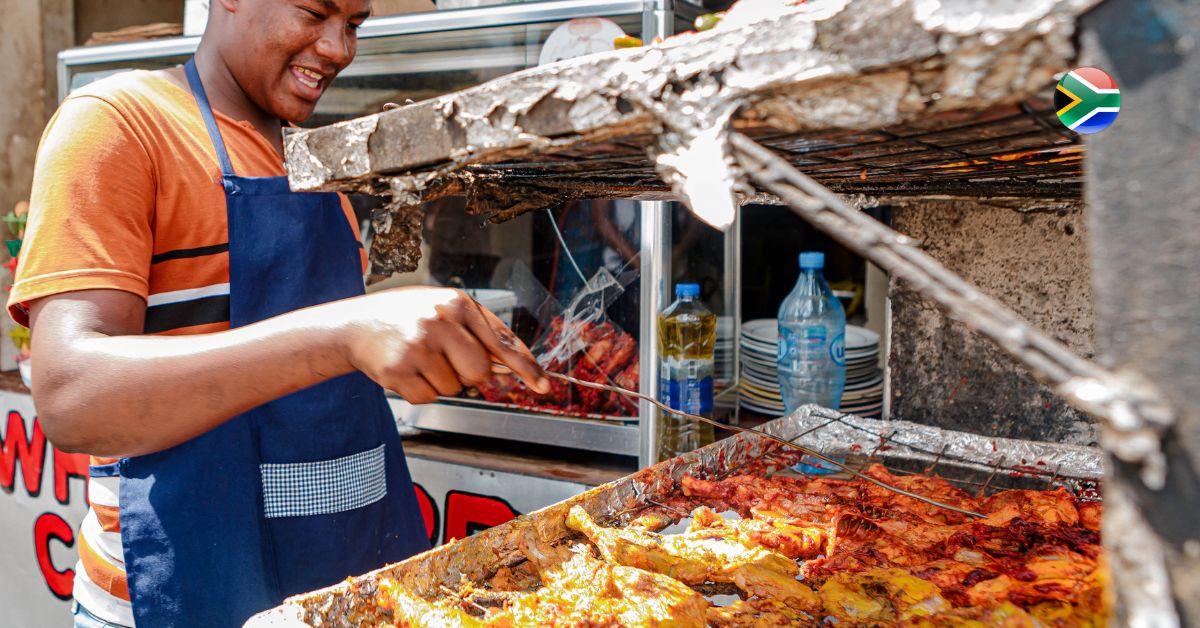Africa is a vast and diverse continent, and its street food scene reflects this rich cultural blend. From busy urban centers to quaint rural towns, the street food culture offers a tantalizing experience for locals and travelers. Each country has its unique flavors, influenced by local ingredients, traditions, and culinary techniques that have been passed down for generations.
Street food in Africa is more than just a quick meal but a way to experience the heartbeat of a country, interact with locals and savor authentic flavors. From Uganda’s famous rolex to Senegal’s mouth-watering fish dishes, street food across the continent is an adventure in itself. The variety of food is endless, with influences ranging from indigenous ingredients to global cuisines, making African street food an essential part of any traveler’s experience.
Please Download Our Mobile App here.
Uganda’s rolex

Uganda’s rolex is a culinary creation that combines simplicity and flavor. This popular street food item is essentially a rolled-up chapati (flatbread) filled with an omelet, fresh vegetables like tomatoes and onions, and sometimes avocado. The name “rolex” is derived from “rolled eggs,” and it’s a go-to snack for people on the move.
Found across Uganda, particularly in Kampala, it’s loved for its affordability, convenience and customizable nature. Street vendors whip up a rolex in minutes, making it perfect for breakfast or a quick snack during the day.
What makes it even more special is its adaptability; vendors can add a range of ingredients based on personal preference, making every rolex unique. Its simplicity, yet robust flavor, makes it a must-try when visiting Uganda.
South Africa’s Bunny Chow
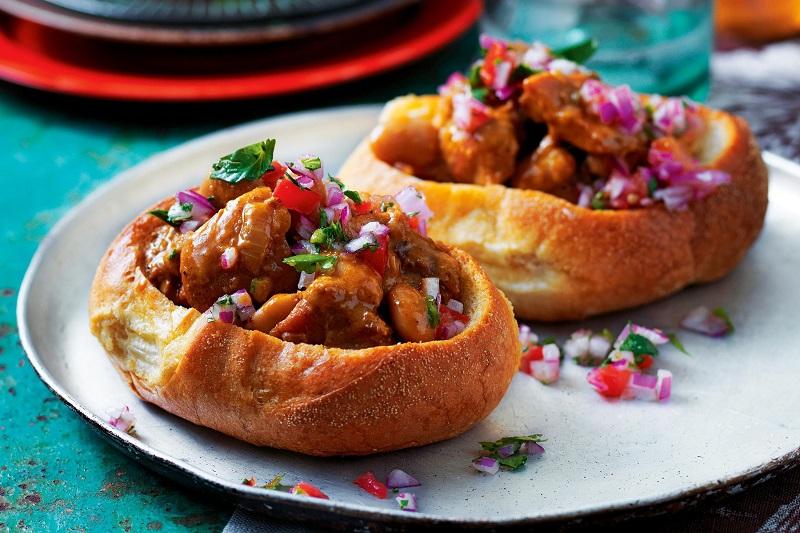
Bunny chow is a unique and hearty street food that originated in the Indian community of Durban, South Africa and has since become a favorite across the country. It consists of a hollowed-out loaf of bread filled with a spicy curry, typically made with lamb, chicken, or beans for a vegetarian option. The bread absorbs the rich flavors of the curry, creating a delicious and satisfying meal.
Bunny chow is often served with a side of pickled carrots or cabbage to add a tangy contrast to the spicy curry. It’s a street food that not only reflects the blending of Indian and South African culinary traditions but also serves as a symbol of Durban’s diverse cultural heritage.
Street vendors sell bunny chow in various sizes, from a quarter loaf to a full loaf, making it perfect for sharing or enjoying solo. Its bold flavors and comforting nature make it a must-try for visitors to South Africa.
Nigeria’s Suya
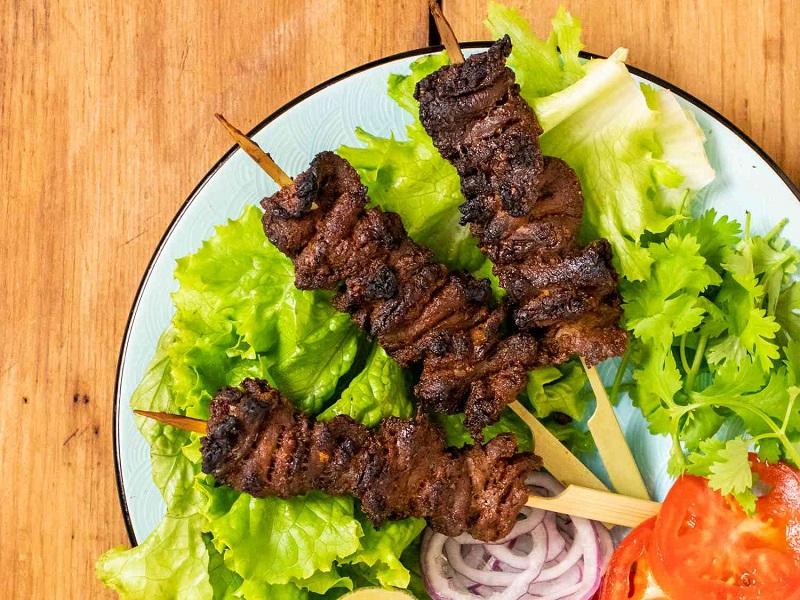
Suya is one of Nigeria’s most popular street foods, often enjoyed at night markets or roadside stands. This spicy meat skewer is made from thin slices of beef, chicken, or goat that are marinated in a mix of ground peanuts, pepper and spices like ginger and paprika. The meat is then grilled over an open flame, giving it a smoky, charred flavor that’s incredibly addictive.
Suya is typically served with sliced onions, tomatoes and spicy pepper sauce on the side. The dish is not only a street food staple but also a social experience, with friends and family gathering around the vendor’s grill to enjoy freshly made suya.
Its intense flavor, thanks to the unique marinade, and the satisfying crunch of charred edges make suya a favorite among locals and travelers alike. In Nigeria, no visit is complete without tasting this street food delicacy, which reflects the country’s rich culinary heritage.
Kenya’s samosa
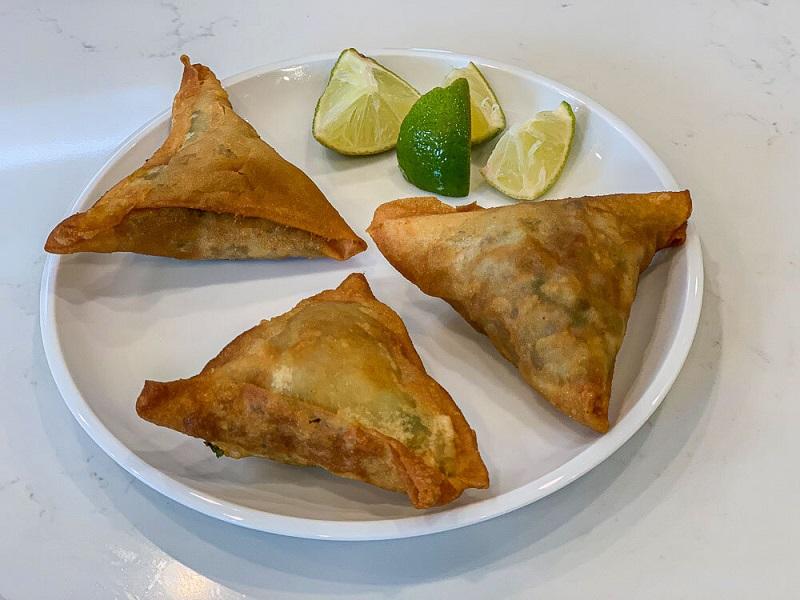
In Kenya, samosas are a beloved street food snack that showcases the country’s Indian and Middle Eastern culinary influences. These crispy, golden-brown pastries are stuffed with a variety of fillings, including minced meat, lentils, or vegetables and deep-fried to perfection. They are often spiced with chili, coriander, and cumin, giving them a bold flavor that complements the flaky pastry exterior.
Kenyan samosas are widely available at street stalls and markets, where they are enjoyed as a quick snack or as part of a larger meal. The versatility of the filling means that every vendor might have their own special recipe, making each bite a unique experience.
Samosas are particularly popular during celebrations and festive seasons, but their widespread availability ensures that visitors can enjoy them year-round. Their crispy texture and flavorful fillings make them a must-try when exploring Kenya’s vibrant street food scene.
Tanzania’s Zanzibari mix
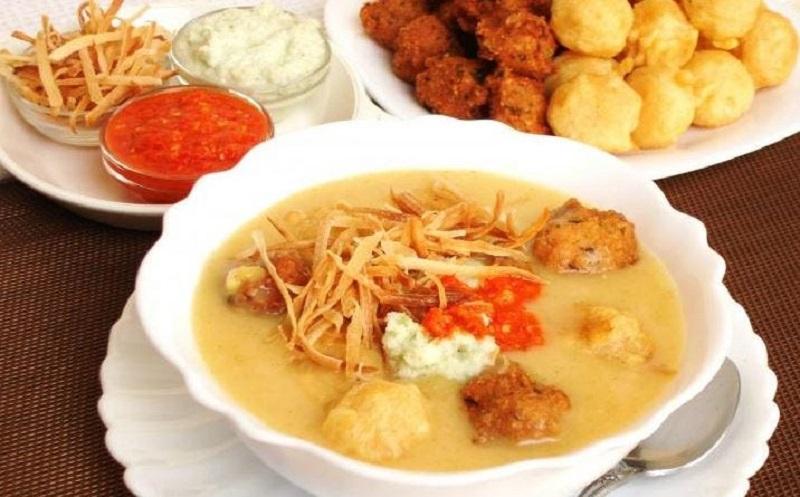
In the coastal regions of Tanzania, especially in Zanzibar, Zanzibari mix is a popular street food dish that offers a burst of flavors and textures. It is a savory soup made from a base of coconut milk, with chickpea fritters (bhajias), potatoes and boiled eggs added in. The dish is typically spiced with turmeric, cumin and cloves, giving it a distinctive aroma and flavor.
What makes Zanzibari mix stand out is the addition of crunchy toppings like fried noodles or nuts, adding texture to the smooth broth. Often served in small bowls at street-side stalls, it is a comforting and flavorful meal, particularly enjoyed as a light lunch or evening snack.
Zanzibari mix reflects the island’s history as a melting pot of African, Arab and Indian influences, and its complex flavors showcase the diverse culinary traditions of the region. For travelers exploring Zanzibar, this street food delicacy is an essential experience that highlights the island’s unique food culture.
West Africa’s Akara

Akara, also known as bean cakes or bean fritters, is a common street food in many West African countries, particularly Nigeria, Ghana and Sierra Leone. Made from black-eyed peas that are blended with onions, spices, and sometimes peppers, the mixture is then deep-fried until golden and crispy. Akara is usually enjoyed as a snack or breakfast item and is often served with bread or custard.
It has a light, fluffy texture on the inside and a crunchy exterior, making it a satisfying bite. Akara is not only delicious but also highly nutritious, providing a good source of protein for many locals. Vendors often prepare these fritters fresh on the street, offering them piping hot to passersby. The simplicity of the ingredients combined with the bold flavor of the spices makes akara a must-try street food when visiting West Africa.
Conclusion
These street food delicacies showcase the variety and richness of Africa’s culinary scene, each dish telling a story of local ingredients, cultural influences, and traditional cooking methods. The street food culture in Africa is one that every traveler should experience firsthand.
